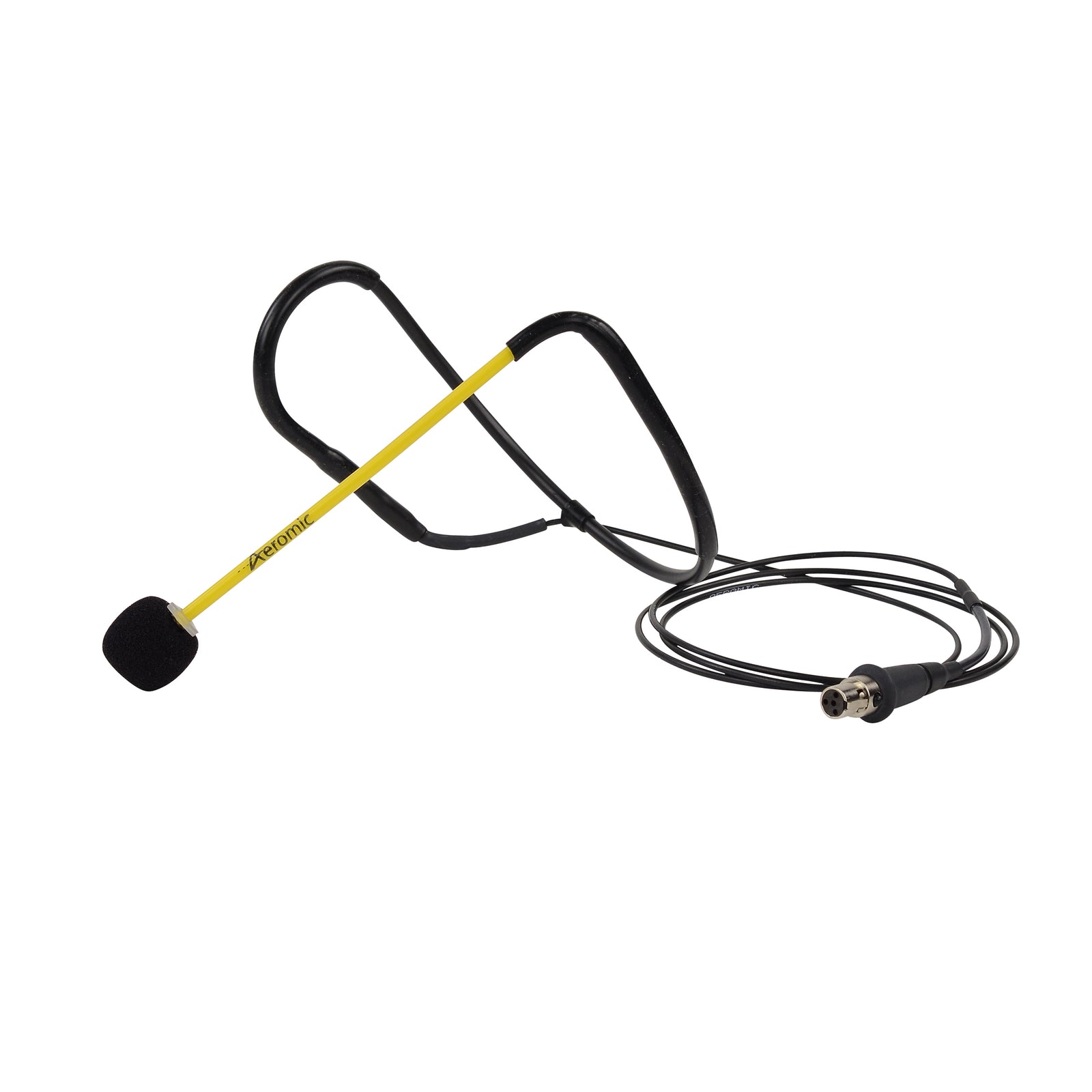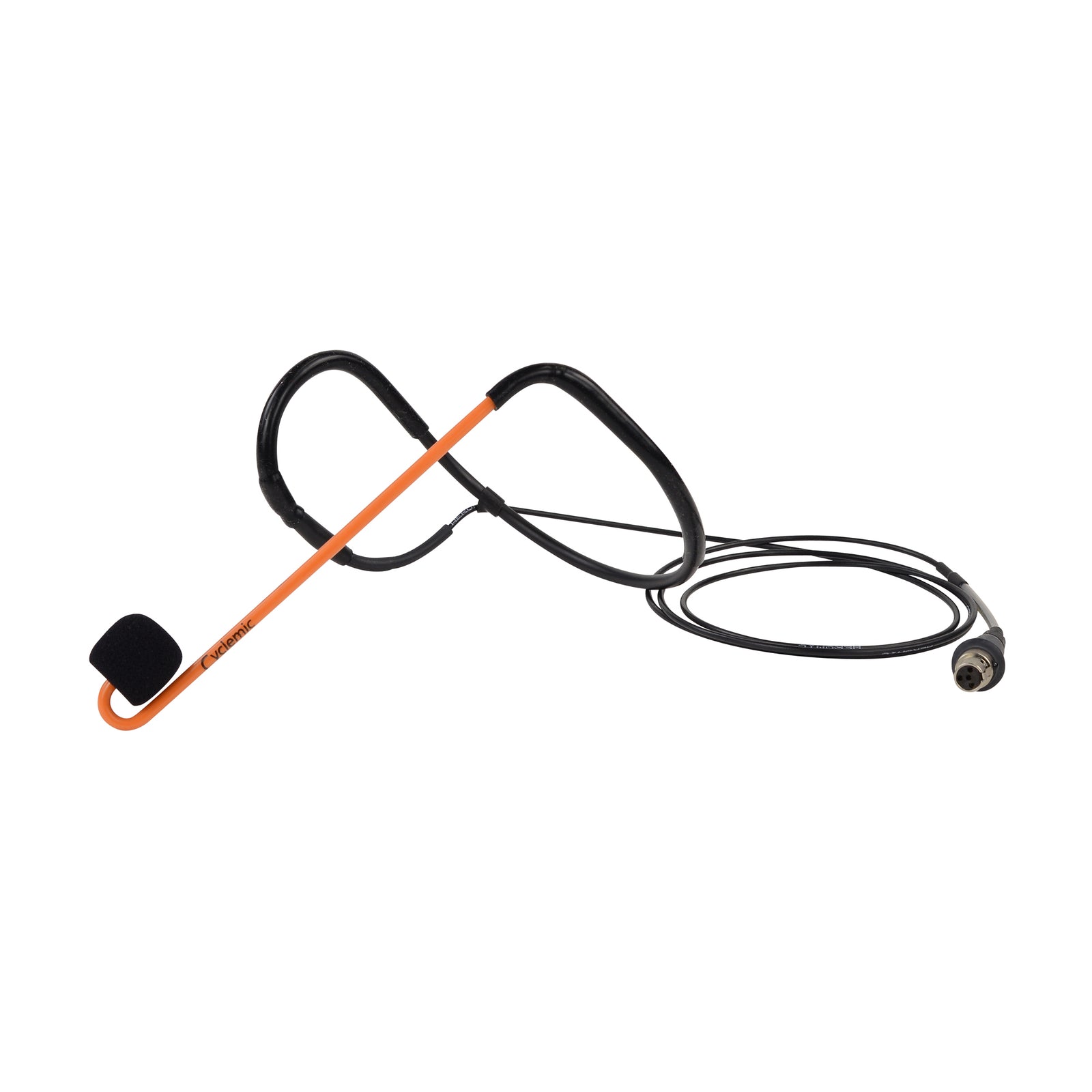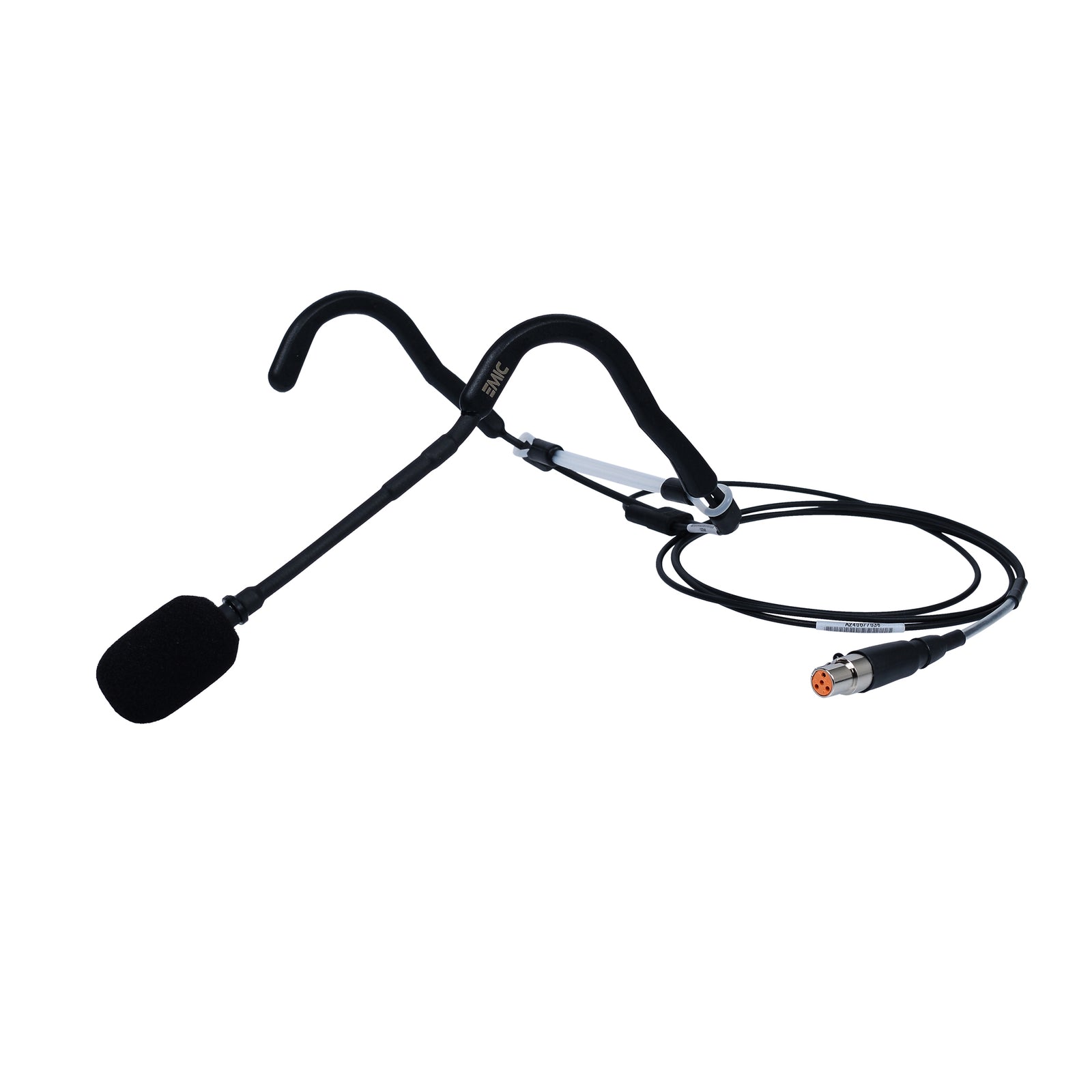
Wireless microphone systems comprise of three parts. A headset microphone, a transmitter, and a matching receiver. A wireless microphone system is an important purchase for any fitness facility. If the microphone stops, the classes could stop too! At Fitness Audio, we recommend selecting a mic system based on how often it will be used. We’ve grouped our wireless fitness mic systems into the following three usage levels: light use, medium use, and heavy use.
To determine which mic system is best for a certain fitness studio or Instructor, you can simply calculate the number of classes the microphone will be used for in any given week. At Fitness Audio, we have given our headmics a "sweat rating". The rating tells you the number of weekly classes the mic can be used for without exposing it to potentially damaging amounts of sweat.
- The EMic: For usage of up to 20 classes per week,
- The Aeromic: For usage of up to 49 classes per week,
- The Cyclemic: For usage of up to 49 classes per week,
- The FM41 Solo Instructor Mic: For usage of up to 10 classes per week.
The user’s voice is sent “wirelessly” to its receiver, located in the sound system. The sound system amplifies the signal from the receiver and outputs it through the system’s speakers.
The three main components operate together like your own low-powered radio station.
1. The Microphone:
All Fitness Instructors prefer the hands-free freedom a headset mic allows. The headset microphone plugs into a bodypack transmitter. This can be held in an Aeromic Pouch Belt or Arm Pouch.
Fitness Audio Shop's Headset Mic Examples:
- EMic Fitness Instructor Headset Microphone,
- Aeromic Premium Fitness Headset Microphone,
- Cyclemic Premium Fitness Headset Microphone,
- The FM41 Solo Instructor Mic.
2. The Transmitter:
Most wireless mic systems used in fitness clubs use bodypack transmitters. The headset mic connects to a bodypack transmitter via a short cable. In 2011, Fitness Audio introduced the first 8 Channel Mini Transmitter for the EMic and Aeromic. The Mini Transmitter is usually mounted to the back of the Headmic’s frame. It can also be put in an Arm Pouch on a shortened cable, or in a waist-worn Mic Belt with a standard cable length.
- The transmitter converts the audio from the microphone to radio waves and transmits them to the receiver. Fitness Audio uses UHF frequencies in 4 groups between 520 MHz & 670 MHz. We also use 2.4 GHz Digital Transmission with our DX6 Series.
Transmitter Examples:
- Fitness Audio U-Series Bodypack Transmitter,
- Fitness Audio U-Series Mini Transmitter,
- Fitness Audio DX6-Series Bodypack Transmitter.
3. The Receiver:
The receiver takes the radio signal from the transmitter and converts it into audio again. The receiver connects to the mixer's mic input, or into a portable speaker mic input. Adjust the mic volume to amplify it through the speakers, mixed over your class music.
Receiver Examples:
- Fitness Audio U-Series Receiver,
- Fitness Audio DX6-Series Receiver,
- Fitness Audio DX6-Portable Receiver.
FAQs:
Q: Is a wireless mic system all I need for my class to hear me?
A: A wireless mic system makes no sound on its own. It must be connected to a sound system mixer or to a portable speaker. Note: some ‘all-in-one’ portable sound systems have a wireless receiver built-in, so this connection is already made.
Q: Will a Shure (for example) transmitter work with an Audio-Technica (for example) receiver?
A: Different brands of wireless mic systems are not compatible with each other due to the specific radio frequencies and methods of transmission each manufacturer uses. Generally speaking, a transmitter only works with the specific receiver model it was sold with. Even if both pieces are from the same manufacturer, they need to be of the same pairing and operate in the same frequency range.
Q: Will an Audio-Technica (for example) headset mic work with a Shure (for example) body-pack transmitter?
A. Different types of connectors are used in the various brands of headsets and bodypacks. This makes them generally not interchangeable. For example, Shure uses a 4-pin connector configured in a 'Y' shape. Audio-Technica uses a 4-pin connector configured in a square shape. You can’t physically plug a Shure headset into an Audio-Technica bodypack.
In 2022, Fitness Audio released their MultiMic connection that suits all brands of a specific connector type. For example, Fitness Audio and Shure both use 4-pins configured in a Y-shape for their headset connectors. Previously, these headsets had unique internal wiring making them not interchangeable. Now, with the T4 MultiMic connection fitted, our headmics work with any Y-shape transmitter plug. Our headmics all come with the more common T4 MultiMic connection. There's also the T3 MultiMic connection as used by AKG and Samson, amongst other brands.
Fitness-Rated Replacement Headsets:
Fitness Audio began as a company that specialises in providing replacement headsets designed to work for longer in the tough, sweaty group exercise environment. This is still the core of our business. Tens of thousands of customers – including some of the largest fitness chains in the world – use our Fitness Audio EMic or Fitness Audio Aeromic Microphones. These mics are designed specifically for Fitness Instructors. Most standard headset mics that come supplied with other brands of wireless mic systems simply aren’t.
For further information on our industry gold fitness microphones, get in touch with the Fitness Audio team today!







